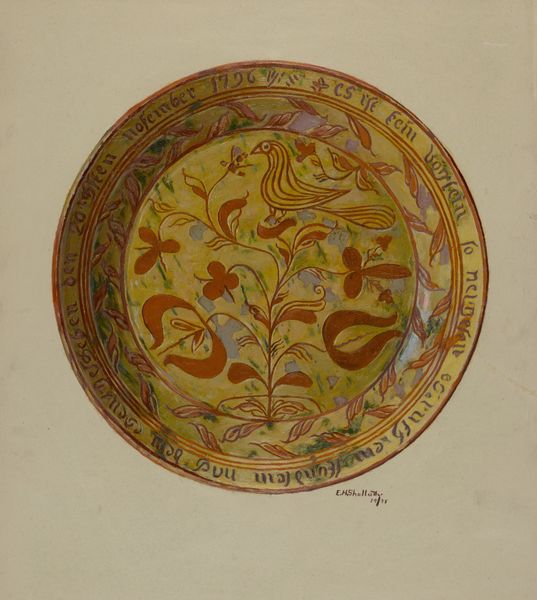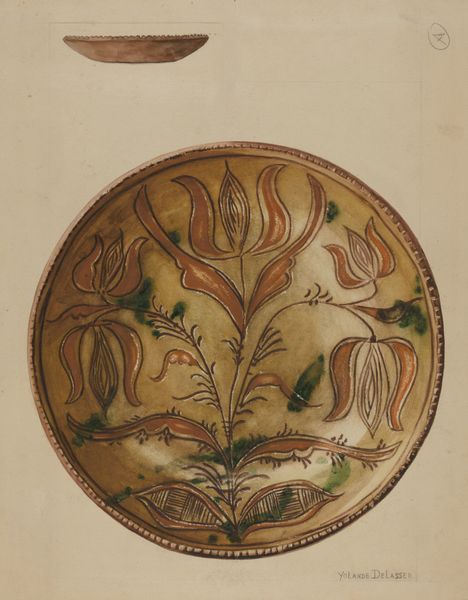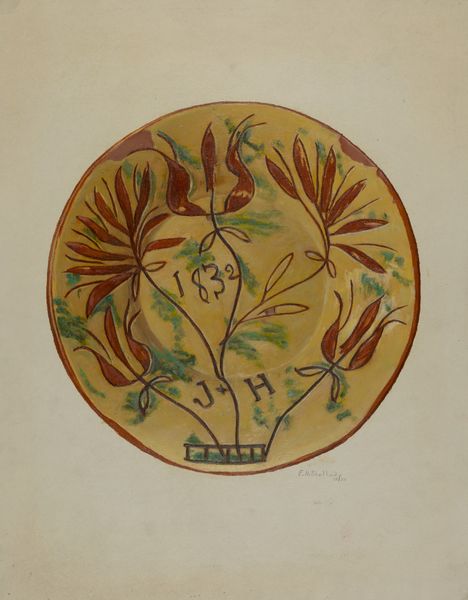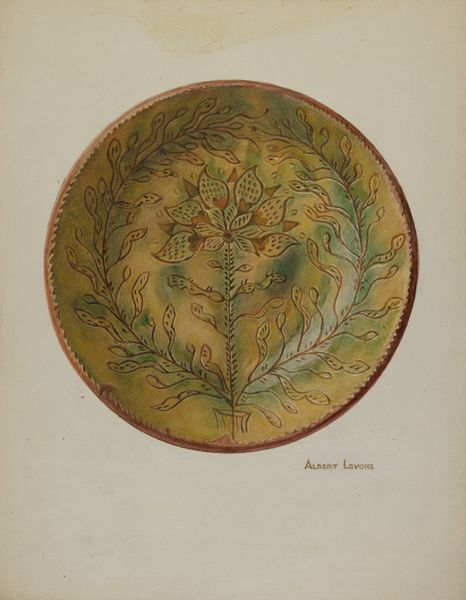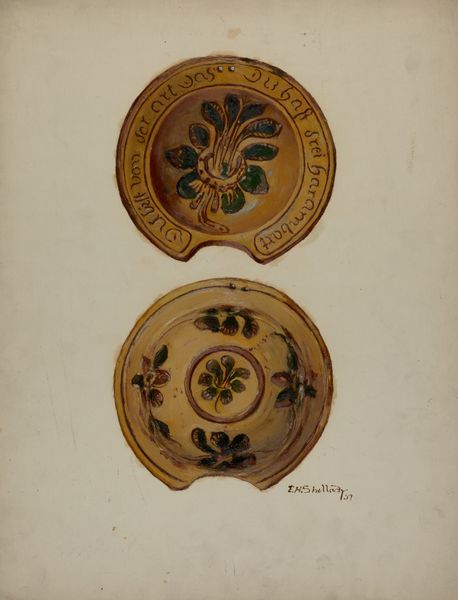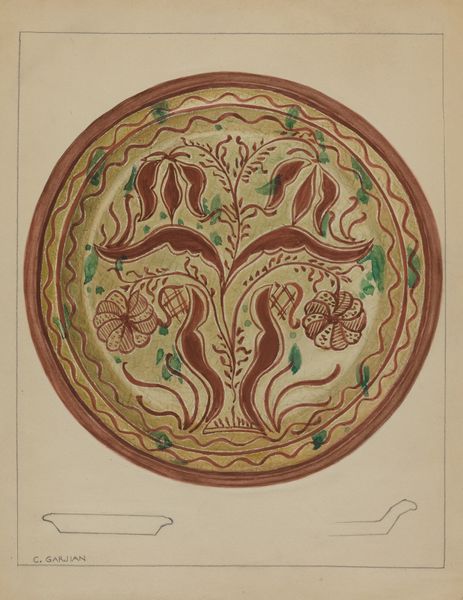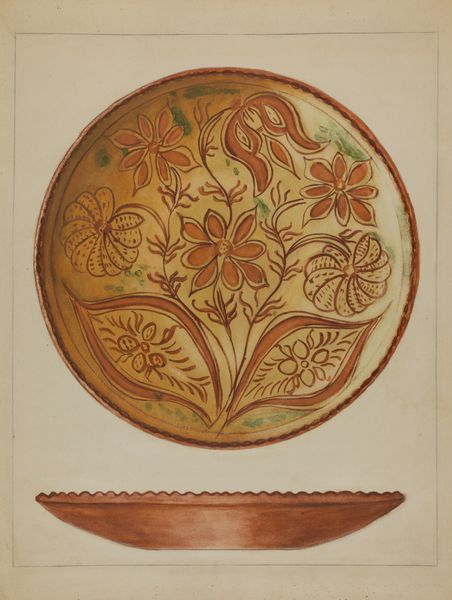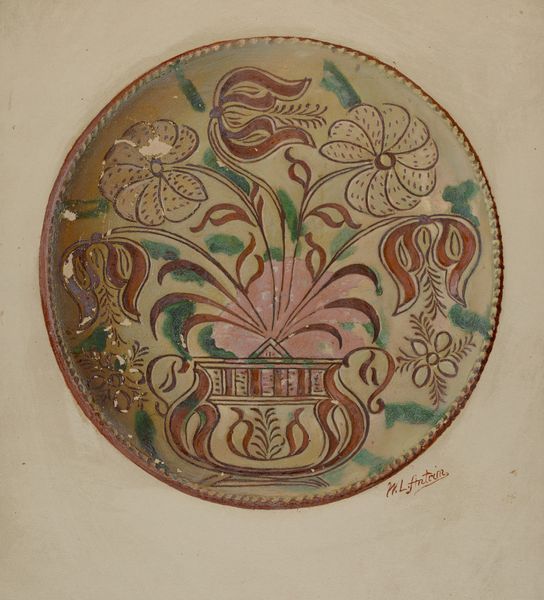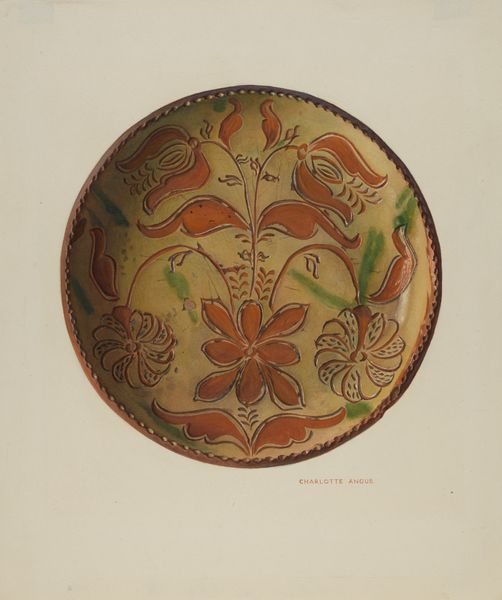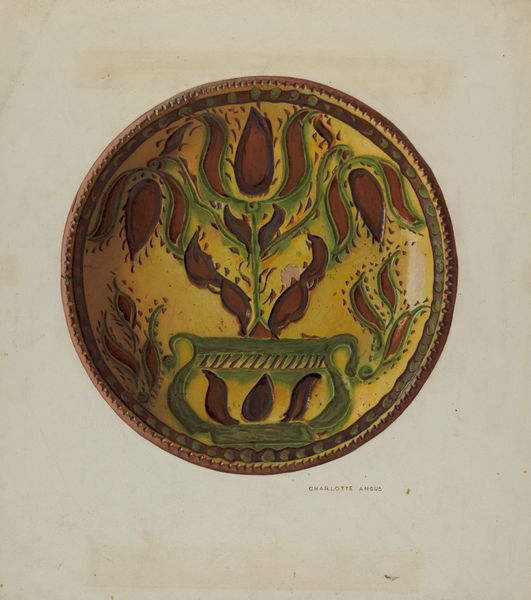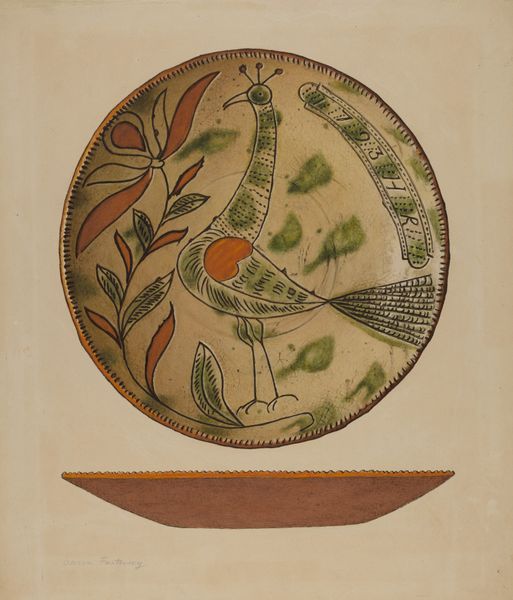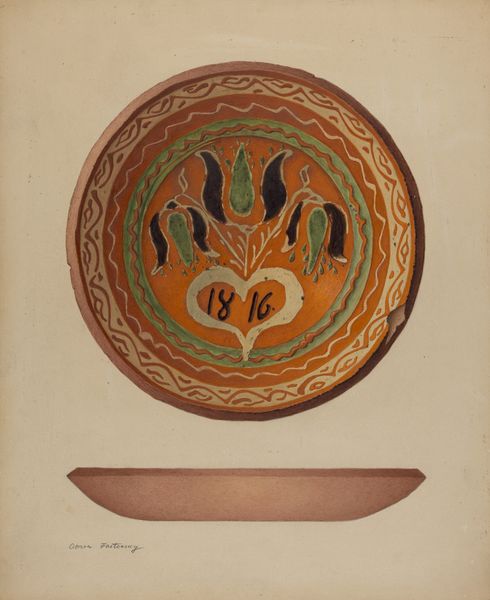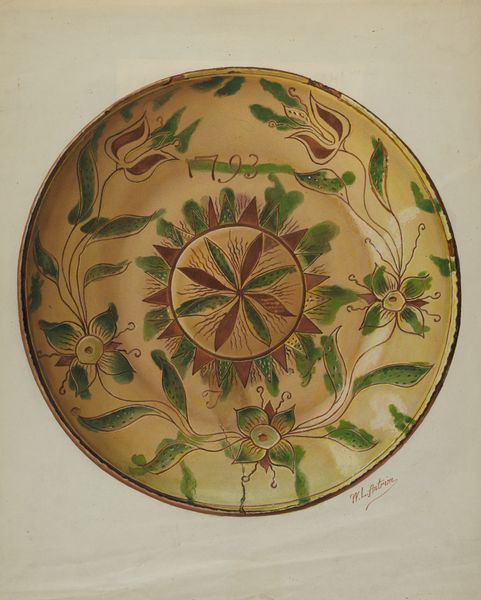
drawing, painting, paper, watercolor
#
drawing
#
water colours
#
painting
#
paper
#
watercolor
#
coloured pencil
Copyright: National Gallery of Art: CC0 1.0
Curator: Looking at this work, one can't help but feel a certain nostalgia for simpler times. We're examining "Pa. German Plate," a watercolor and coloured pencil piece on paper, dating to around 1936 and believed to be by Albert Levone. Editor: There's a pleasing asymmetry at play here. The somewhat muted tones against the warm ochre background really make it feel grounded and naturalistic. A clear formal dialogue is present in the central flower with the rest of the plate's foliage. Curator: Indeed. Pennsylvania German folk art often employed these very distinctive stylized floral motifs. When we consider the production of these objects, they were often integrated into domestic spaces as practical wares, like plates for everyday use. This rendering prompts us to question what's "art" versus "craft". Editor: That interplay of purpose and design is fascinating. Notice the contrast between the more rigidly structured flower at the plate's center versus the more organic, flowing vines. The balance creates a lovely tension, doesn’t it? Curator: Absolutely. The colours, the browns and the greens, would be locally sourced and crafted into these items for sale to mostly middle class people in tourist shops across the American northeast. It highlights the artist's integration of labor, class, and vernacular styles into one painted artifact on paper. Editor: Yes, it’s as much an object as a semiotic representation, one whose charm invites closer scrutiny. The colour composition, while restricted in palette, produces a subtle optical illusion. Curator: Its historical positioning also complicates traditional boundaries of “high art” by engaging with folk practices, commodification and domestic labor. It invites an understanding of these as art, expanding beyond more typical boundaries of studio art practice. Editor: Quite so! What starts as a visual engagement quickly leads to broader contextual questions. Curator: Thinking about this rendering as a document of culture shifts our perceptions as well, leading to an understanding of material realities beyond aesthetic merit. Editor: That makes it all the more poignant. What we perceive, and how we come to that perception are essential tools for thinking more holistically about artistic endeavors.
Comments
No comments
Be the first to comment and join the conversation on the ultimate creative platform.
